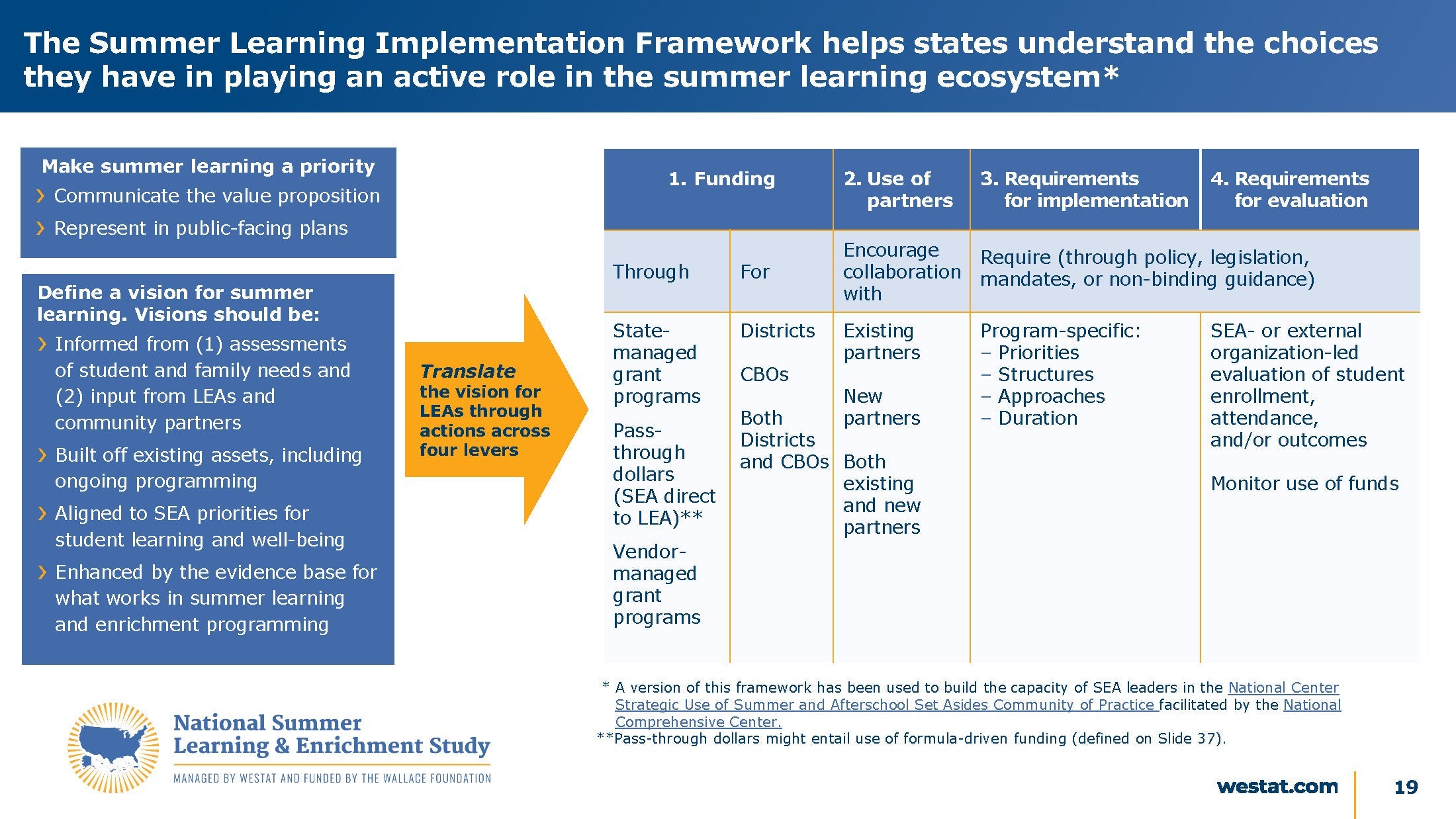How can states better support students’ participation in quality summer learning opportunities? Partnerships between states and summer learning programs can foster high-quality programs, advancing student academic and social growth.
“When we discuss the importance of summer learning, we really are discussing ways to promote equity, create opportunity, and build community,” says Mashona Council, consultant for the National Summer Learning Association (NSLA) in the third episode of Wallace’s A Hot Time for Summer Learning podcast series. “...What's important is that…we have had shared community, we've had shared young people, we've had shared need, but now…we're able to have a shared vision and a shared language.”
The pandemic years proved that districts and states could act boldly to address students’ needs in a time of crisis. The question now is: can they continue to prioritize summer as a critical time for learning, growth, and connection?
In the podcast episode, hosted by Wallace’s senior program officer in youth development Polly Singh, Council speaks alongside the Council of Chief State School Officers (CCSSO) and summer learning leaders from Oregon and New Jersey. The conversation explores the results of a partnership between CCSSO and NSLA, launched in 2021 to elevate the importance of summer learning at the state level.
The year marked a major inflection point for summer learning. A federal call to action urged states and districts to address pandemic-related learning loss through high-quality summer programming, and unprecedented funding from the American Rescue Plan (ARP) made it possible.
The result? 94 percent of districts conducted some type of summer learning programming in 2021. On average, districts served nearly 20 percent of their students. And, for the first time, state education agencies emerged as key players in summer learning.
A recent report, the third and final part of The National Summer and Learning and Enrichment Study (NSLES), examines Summer 2021 from the perspective of state education agencies and school districts, marking a major turning point for summer learning programs nationwide.
Of the state agencies interviewed, more than 80 percent developed a vision for summer learning and enrichment. States drew on assessments of student and family needs, school district and community partner input, existing assets, state priorities, and the summer learning research and evidence base to develop their visions. States generally approached their new role with summer learning by making it a priority, setting a vision, and deploying policy levers around funding, partnering, implementation, and evaluation.
Another recent Wallace-funded report draws on case studies of nine geographically and politically diverse states. While summer learning in each state looked different, state actions to support summer learning generally fell into five categories:
- Garnering support for summer learning investments
- Implementing summer learning grant programs
- Increasing access for priority groups
- Promoting quality programming
- Collecting and using data
The report shows how different states navigated these areas and built a summer learning support infrastructure. For instance, in 2021, Tennessee passed legislation requiring school districts to provide summer learning camps for priority students. The state has now allocated funding for grades 4 through 9 in perpetuity. In 2023, over 200,000 students attended the state’s summer learning camps.
Also in 2021, New Mexico initiated a paid summer internship program to promote post–high school readiness. The state legislature has now allocated stated funding to grow the program. More than 2,700 students participated in 2023. And Massachusetts established a summer learning grant program for statewide and regional nonprofits. These organizations funded local partners to provide student academic and enrichment opportunities. By 2023, state grant–funded afterschool and summer programs served more than 10 percent of the state’s K–12 students.
As federal funding sunsets and future funding remains uncertain, states face decisions about their role in supporting summer learning. “Given the evidence that well-implemented and well-attended summer programs can effectively support students’ academic learning, social development, and emotional well-being, there are good reasons for states to continue their involvement in this arena,” the authors of How States Are Expanding Quality Summer Learning Opportunities write.
States looking to keep summer learning a priority can draw valuable lessons from these recent case studies. Some states had little history of investment before the pandemic; many are now planning to sustain programs with state funds. Their policies and practices offer a roadmap for expanding access to high-quality summer learning, especially for the students who need it most.




